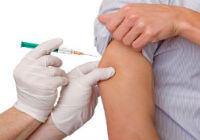What is a hepatitis B virus (b), as it is transmitted to whom the analysis is shown. Vaccination from viral hepatitis in.
Content
- What is dangerous hepatitis virus in
- Diagnosis of disease. Hepatitis analysis in
- Best Prevention — Graft from hepatitis in
Among all viral hepatitis, hepatitis B (b) is the most common. He is very cunning. Most people do not even suspect that they are infected with this pathogen. Remove from infection difficult, but you can. The main thing — know.
What is dangerous hepatitis virus in

Any specialist will start acquaintance with the causative agent of hepatitis B with the characteristics of its structure and affiliation to a specific family. But for the average man, these data are extra and non-informative. Much more important to understand several other facts:
- Hepatitis virus is very resistant to external environment. At room temperature it is able to live as much as 3 months, and with a minus — until six months and more. It is not afraid of infection and sunlight, as well as many common disinfecting solutions.
Diagnosis of disease. Hepatitis analysis in

Since the disease often proceeds with non-characteristic signs or completely without them, the fact of the presence of a virus in the body can only be installed using laboratory studies. Pass the analysis on hepatitis B can be in any laboratory providing relevant services. With the help of modern diagnostics, various virus markers are determined, and the presence of antibodies to the causative agent is detected. This allows doctors to conclude not only about the infection, but also the degree of activity of the causative agent. In rare cases, patients showing liver biopsy.
Best Prevention — Graft from hepatitis in
The most effective method of prevention — Hepatitis Vaccine in. The first vaccination from hepatitis to most children gets in the hospital in the first days of life. In accordance with WHO recommendations, it must be repeated twice or three times in a complex with other vaccinations. Such a vaccination scheme allows you to develop resistance to infection at least 20 years, and possibly life.









